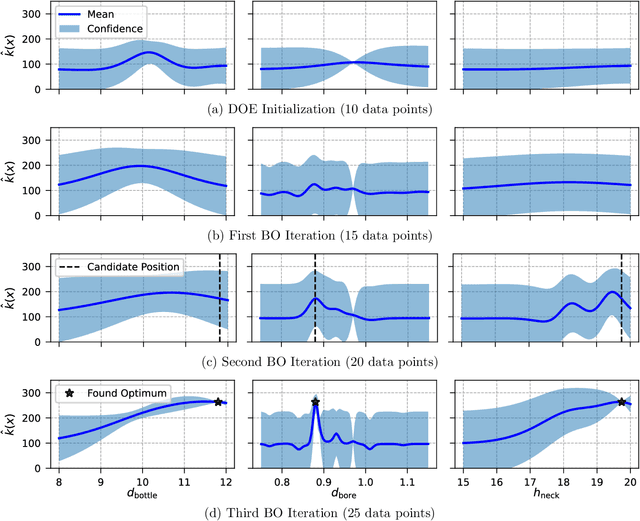Clemens Gößnitzer
Approximating Families of Sharp Solutions to Fisher's Equation with Physics-Informed Neural Networks
Feb 13, 2024



Abstract:This paper employs physics-informed neural networks (PINNs) to solve Fisher's equation, a fundamental representation of a reaction-diffusion system with both simplicity and significance. The focus lies specifically in investigating Fisher's equation under conditions of large reaction rate coefficients, wherein solutions manifest as traveling waves, posing a challenge for numerical methods due to the occurring steepness of the wave front. To address optimization challenges associated with the standard PINN approach, a residual weighting scheme is introduced. This scheme is designed to enhance the tracking of propagating wave fronts by considering the reaction term in the reaction-diffusion equation. Furthermore, a specific network architecture is studied which is tailored for solutions in the form of traveling waves. Lastly, the capacity of PINNs to approximate an entire family of solutions is assessed by incorporating the reaction rate coefficient as an additional input to the network architecture. This modification enables the approximation of the solution across a broad and continuous range of reaction rate coefficients, thus solving a class of reaction-diffusion systems using a single PINN instance.
Bringing Chemistry to Scale: Loss Weight Adjustment for Multivariate Regression in Deep Learning of Thermochemical Processes
Aug 03, 2023Abstract:Flamelet models are widely used in computational fluid dynamics to simulate thermochemical processes in turbulent combustion. These models typically employ memory-expensive lookup tables that are predetermined and represent the combustion process to be simulated. Artificial neural networks (ANNs) offer a deep learning approach that can store this tabular data using a small number of network weights, potentially reducing the memory demands of complex simulations by orders of magnitude. However, ANNs with standard training losses often struggle with underrepresented targets in multivariate regression tasks, e.g., when learning minor species mass fractions as part of lookup tables. This paper seeks to improve the accuracy of an ANN when learning multiple species mass fractions of a hydrogen (\ce{H2}) combustion lookup table. We assess a simple, yet effective loss weight adjustment that outperforms the standard mean-squared error optimization and enables accurate learning of all species mass fractions, even of minor species where the standard optimization completely fails. Furthermore, we find that the loss weight adjustment leads to more balanced gradients in the network training, which explains its effectiveness.
Finding the Optimum Design of Large Gas Engines Prechambers Using CFD and Bayesian Optimization
Aug 03, 2023



Abstract:The turbulent jet ignition concept using prechambers is a promising solution to achieve stable combustion at lean conditions in large gas engines, leading to high efficiency at low emission levels. Due to the wide range of design and operating parameters for large gas engine prechambers, the preferred method for evaluating different designs is computational fluid dynamics (CFD), as testing in test bed measurement campaigns is time-consuming and expensive. However, the significant computational time required for detailed CFD simulations due to the complexity of solving the underlying physics also limits its applicability. In optimization settings similar to the present case, i.e., where the evaluation of the objective function(s) is computationally costly, Bayesian optimization has largely replaced classical design-of-experiment. Thus, the present study deals with the computationally efficient Bayesian optimization of large gas engine prechambers design using CFD simulation. Reynolds-averaged-Navier-Stokes simulations are used to determine the target values as a function of the selected prechamber design parameters. The results indicate that the chosen strategy is effective to find a prechamber design that achieves the desired target values.
Understanding the Difficulty of Training Physics-Informed Neural Networks on Dynamical Systems
Mar 25, 2022



Abstract:Physics-informed neural networks (PINNs) seamlessly integrate data and physical constraints into the solving of problems governed by differential equations. In settings with little labeled training data, their optimization relies on the complexity of the embedded physics loss function. Two fundamental questions arise in any discussion of frequently reported convergence issues in PINNs: Why does the optimization often converge to solutions that lack physical behavior? And why do reduced domain methods improve convergence behavior in PINNs? We answer these questions by studying the physics loss function in the vicinity of fixed points of dynamical systems. Experiments on a simple dynamical system demonstrate that physics loss residuals are trivially minimized in the vicinity of fixed points. As a result we observe that solutions corresponding to nonphysical system dynamics can be dominant in the physics loss landscape and optimization. We find that reducing the computational domain lowers the optimization complexity and chance of getting trapped with nonphysical solutions.
 Add to Chrome
Add to Chrome Add to Firefox
Add to Firefox Add to Edge
Add to Edge